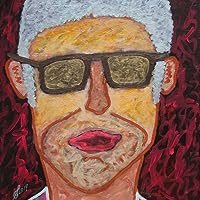Antibiotics Quotes
Quotes tagged as "antibiotics"
Showing 1-17 of 17
“It has been demonstrated that a species of penicillium produces in culture a very powerful antibacterial substance which affects different bacteria in different degrees. Generally speaking it may be said that the least sensitive bacteria are the Gram-negative bacilli, and the most susceptible are the pyogenic cocci ... In addition to its possible use in the treatment of bacterial infections penicillin is certainly useful... for its power of inhibiting unwanted microbes in bacterial cultures so that penicillin insensitive bacteria can readily be isolated.”
―
―
“Many people infected with C. diff are sick with diarrhea, abdominal pain, nausea, and weight loss. Others are “carriers” of C. diff with no signs or symptoms of disease. Some of these carriers have been recently infected with C. diff but have recovered and now feel well. But carriers still have the C. diff organism in their stools and can serve as a silent reservoir of infection in hospitals and nursing homes.”
―
―
“C. diff is not a simple “stomach bug” like viral gastroenteritis or food poisoning that disappears in nearly all patients after a week or two.”
―
―
“Hospitals in almost every country have reported outbreaks of C. diff, and the number and severity of cases continues to soar. In 2010 there were 350,000 cases of C. diff diagnosed in U.S. hospitals. That means that of 1,000 patients admitted to U.S hospitals, 10 will become infected with C. diff, most of them elderly. In some hospitals and nursing homes, as many as one in five patients is infected.”
―
―
“In the past five years, C. diff has spread across the globe, helped in large part by air travel, the availability and frequent use of antibiotics, and the graying of the world’s population.”
―
―
“Among frail, elderly patients, C. diff can be fatal in approximately 5-10%. Some patients with severe C. diff end up losing their colon and have a permanent bag on their side to catch bodily waste, via a procedure known as an ileostomy.”
―
―
“Some studies have reported C. diff in food purchased in a supermarket. Dogs, horses, pigs, and rabbits can also be carriers of C. diff, although spread of disease from pets or domestic animals to humans has yet to be documented. Like most infections, it is usually impossible to pinpoint the source of C. diff.”
―
―
“Testing stools for C. diff in patients after they have finished their Flagyl or Vanco for 10 days and after their bowel movements have returned to normal (that is, formed and not watery) is a waste of time and money, and is not helpful to the doctor or patient.”
―
―
“Once C. diff leaves the colon of the infected patient in a liquid stool, it usually converts to a spore that is like a seed that lies dormant in the hospital until it gets picked up by a suitable human host. Once swallowed, C. diff germinates (hatches) in the bowel and starts a new cycle of infection.”
―
―
“The idea behind a stool transplant is to “reseed the lawn,” so to speak. After exposure to weeks or months of antibiotics (including Vanco) the normal bowel flora — the organisms in your colon that help prevent infection — is weakened. They simply can’t keep C. diff out. In other words, the normal barrier function of the colonic flora is gone, and C. diff gets right back in. So putting in some normal flora from a healthy donor is like reseeding the lawn — it restores the barrier. When that happens, C. diff cannot get back in, and the infection is cured.”
―
―
“Some older or very ill patients may not be suitable candidates for fecal transfer. Colonoscopy is an invasive procedure, especially for those patients who are too ill with other conditions like cancer, heart failure, dialysis, or Alzheimer’s.”
―
―

“The biological universe was full of molecules picking out their partners like clever locks designed to fit a key: toxins clinging inseparably to antitoxins, dyes that highlighted only particular parts of cells, chemical stains that could nimbly pick out one class of germs from a mixture of microbes. If biology was an elaborate mix-and-match game of chemicals, Ehrlich reasoned, what if some chemical could discriminate bacterial cells from animal cells--and kill the former without touching the host?”
― The Emperor of All Maladies: A Biography of Cancer
― The Emperor of All Maladies: A Biography of Cancer

“antibiotic: (n.) drug that requires immediate administration of probiotics.”
― The Angel's Dictionary
― The Angel's Dictionary

“In the debate over the use of antibiotics in agriculture, a distinction is usually made between their clinical and nonclinical uses. Public health advocates don’t object to treating sick animals with antibiotics; they just don’t want to see the drugs lose their effectiveness because factory farms are feeding them to healthy animals to promote growth. But the use of antibiotics in feedlot cattle confounds this distinction. Here the drugs are plainly being used to treat sick animals, yet the animals probably wouldn’t be sick if not for the diet of grain we feed them.”
― The Omnivore's Dilemma: A Natural History of Four Meals
― The Omnivore's Dilemma: A Natural History of Four Meals

“Researchers have shown a renewed interest in essential oil as a means of combating antibiotic-resistant infections.”
― Essential Oils Handbook: Recipes for Natural Living
― Essential Oils Handbook: Recipes for Natural Living

“higher antimicrobial loads will result in a lower total pathogenic load but also a lower involvement of the immune system and therefore less immunity in the long run (as indeed has been empirically demonstrated in a number of experiments summarised in a sweeping review by Benoun (2016)). Thus, while rapid and aggressive antimicrobial treatment is sometimes appropriate, the long-term absence of ensuing CD4+ immunity is its cost.”
― Computational Modeling of Infectious Disease: With Applications in Python
― Computational Modeling of Infectious Disease: With Applications in Python
All Quotes
|
My Quotes
|
Add A Quote
Browse By Tag
- Love Quotes 97.5k
- Life Quotes 76k
- Inspirational Quotes 73k
- Humor Quotes 43.5k
- Philosophy Quotes 29.5k
- Inspirational Quotes Quotes 27k
- God Quotes 26k
- Truth Quotes 23.5k
- Wisdom Quotes 23.5k
- Romance Quotes 23k
- Poetry Quotes 22k
- Death Quotes 20k
- Happiness Quotes 18.5k
- Life Lessons Quotes 18.5k
- Hope Quotes 18k
- Faith Quotes 18k
- Quotes Quotes 16.5k
- Inspiration Quotes 16.5k
- Spirituality Quotes 15k
- Religion Quotes 15k
- Motivational Quotes 15k
- Writing Quotes 15k
- Relationships Quotes 14.5k
- Life Quotes Quotes 14k
- Love Quotes Quotes 14k
- Success Quotes 13.5k
- Time Quotes 12.5k
- Motivation Quotes 12k
- Science Quotes 11.5k
- Motivational Quotes Quotes 11.5k

